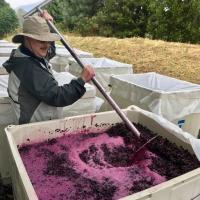-
Welcome to the eG Forums, a service of the eGullet Society for Culinary Arts & Letters. The Society is a 501(c)3 not-for-profit organization dedicated to the advancement of the culinary arts. These advertising-free forums are provided free of charge through donations from Society members. Anyone may read the forums, but to post you must create a free account.
Pinot Grigio and White Zin Free Zones
-
Similar Content
-
Gluten-free cooking hacks 1 2 3
By kayb,
- 60 replies
- 10,847 views
-
- 6 replies
- 351 views
-
- 32 replies
- 7,415 views
-
- 4 replies
- 7,116 views
-
Dried Egg Whites/Pasteurized Egg Whites for Meringues, Marshmallows, and Other Confectionary 1 2
By Jim D.,
- 34 replies
- 11,341 views
-
-
Recently Browsing 0 members
- No registered users viewing this page.







Recommended Posts